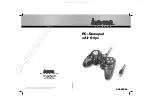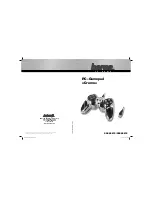
Sequence of Operation
RTU Open v3
CARRIER CORPORATION ©2019
Installation and Start-up Guide
All rights reserved
50
Enthalpy control
You may use an enthalpy switch to indicate the suitability of outdoor air for economizer cooling. You can use either
an outdoor air or differential enthalpy switch. A differential enthalpy switch has a sensing device in both the
outdoor and return air streams. A differential enthalpy switch indicates when outside air is more suitable to be
used than the return air and is available for economizer cooling. If no enthalpy switch is configured, a network
point (Object Name: oae) is available. This point is displayed in the i-Vu® application and an Equipment Touch as
Enthalpy
(BACnet).
The sequence of operation for economizer cooling is the same with or without an enthalpy switch, except that an
enthalpy switch imposes one more validation on the suitability of outside air for economizer cooling. An
Enthalpy
Status
that is
High
disables the economizer and the outside air damper goes to its minimum position. An
Enthalpy Status
that is
Low
enables the economizer if a call for cooling exists and the remaining preconditions are
met.
Indoor Air CO2
Indoor Air CO2
is controlled on rooftop equipment with an economizer.
Indoor Air CO2
sequence is enabled by
installing an air quality (CO2) sensor. A CO2 sensor may be terminated at the RTU Open, or a subordinate zone
controller, when part of a zoned system.
An outdoor air quality sensor may also be installed and terminated at the RTU Open, but it is not required. When
an outdoor air quality sensor is not installed, the algorithm uses 400ppm as the fixed outdoor air CO2 level.
The following conditions must be true for the
Indoor Air CO2
algorithm to operate:
•
The system is occupied
•
The supply fan has been started for at least 30 seconds
•
The CO2 sensor has a valid reading
As the air quality within the space changes, the minimum position of the economizer damper changes, which
allows more or less outdoor air into the space, depending on the relationship of the indoor air CO2 level to the
differential setpoint.
The
Indoor Air CO2
algorithm calculates a minimum position value using a PID loop. The CO2 minimum damper
position is then compared against the
Vent Dmpr Pos / DCV Min Pos
setpoint and the greatest value becomes the
final minimum damper position of the economizer output.
The degree to which the outside air damper may be opened by the
Indoor Air CO2
algorithm is limited by the
DCV
Max Vent Damper Pos
setpoint, which is adjustable between zero and seventy-five percent (0 – 75%).
Summary of Contents for RTU Open v3
Page 113: ......
















































